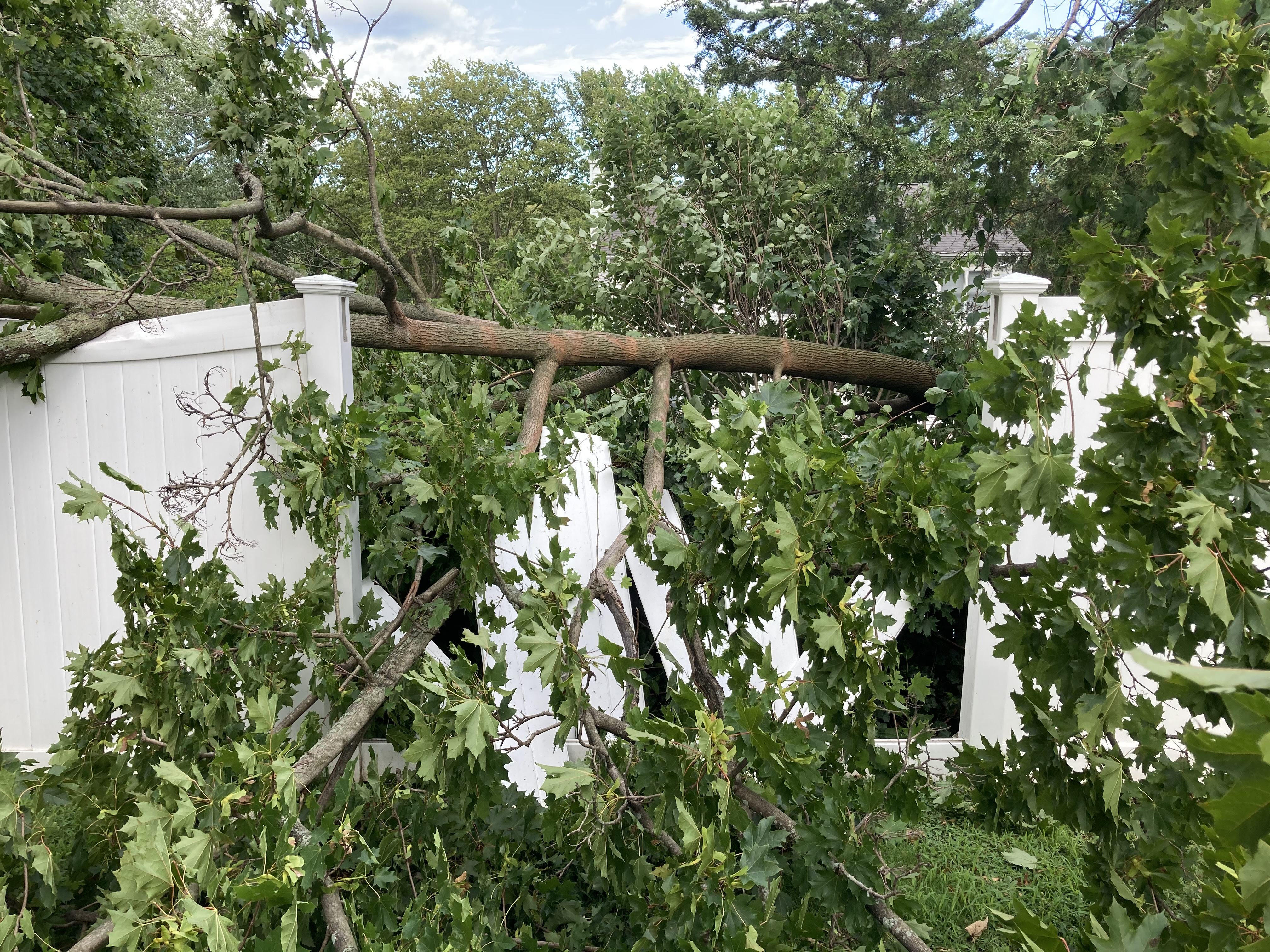Many home and business owners have suffered property damage in the wake of tropical storm Isaias. Some people have sustained catastrophic personal injuries. For Long Islanders, the most common cause is fallen trees resulting in toppled fences, caved roofs, smashed car windshields, or bodily harm. The question then is who is responsible; who's liable for the damage, will insurance cover it, whose insurance, and what is covered?
Many people are under the misimpression that if their neighbor's tree has fallen on or damaged their property then their neighbor is legally responsible. Generally, this is not the case because the neighbor was not aware that the tree or tree limb was in danger of falling. Unfortunately, they may not even be responsible for the removal of the tree from your property (which may cost even more than repairing the property damage).
Unless that tree had shown earlier signs of decay, or a reasonable inspection would have shown that the tree or one of its limbs was not stable and in danger of falling, the neighbor is not responsible. Dead branches, discoloration, weathering leaves, or branches that are barren of any leaves are objective outward evidence that there could be an issue with the health of the tree or the limbs of the tree. Under these circumstances, a homeowner would be responsible for that tree that falls onto their neighbor’s property.
For this reason, the insurance company insuring the homeowner whose tree fell will generally not be responsible for paying for these damages. The damages will be paid through the homeowner's insurance policy for the property that sustained the damage regardless of who’s tree it was before it fell. That said, while insurance companies are generally not responsible for these damages caused by their insured’s tree falling onto the neighbor’s property (unless the property owner knew or should have known that the tree was unstable), some companies have been willing to cover these damages and removal costs, at least in part. When Hurricane Sandy occurred, many insurance companies cooperated in resolving these property claims without becoming overly concerned with who’s tree it was. Therefore, It’s important to make these claims to your insurance company on a timely basis and make sure that your neighbor starts a claim process as well.
In terms of liability for personal injuries, the analysis is very similar. People injured or killed by fallen trees and branches are often unable to recover from their injuries and damages unless they can prove prior notice. The issue comes down to proving that the tree or limb was objectively and outwardly in poor condition such that the homeowner would have been on notice and they should have removed the dead limbs or tree beforehand. We advise you to inspect the trees on your property for signs of rot or breaks following the storm. If you see any or are unsure, we recommend hiring a qualified tree specialist to inspect and remove the affected trees or limbs.
If you have any questions or require our assistance, feel free to contact us. We’re here to help.
Wishing you a safe and healthy day.
Richard Apat is the head of VMM’s Personal Injury Practice and Real Estate Litigation Subpractice. He can be reached at rapat@vmmlegal.com and 516.437.4385 x152.


